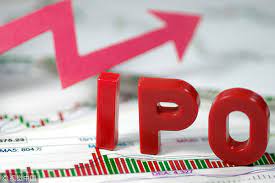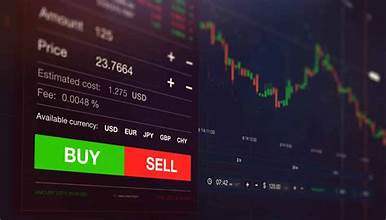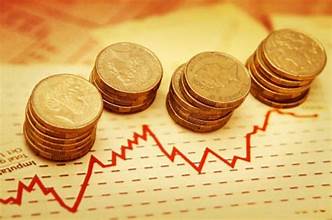Introduction
Your odds of raising $200, 000 for a Private Company are about one-in-four (Money 1/1/98). Your odds of raising a million dollars as a spun-off public company exceed ninety percent. The odds improve because you are offering investors liquidity.
Liquidity means that investors are more willing to risk their money on your stock than on your company. Your stock has the potential to outperform, by far, your business plan. These facts explain why professionals take companies public to raise money for the company. Stock promoters abuse the OTCBB system, but honest entrepreneurs must use it to succeed.
For Centuries, investors have told business owners to sell stock, not steak (your business plan). If you find investors for your steak, they’ll want half your steak for their money. If you have buyers for your stock, you’ll keep control of your company. In the financial world, few investors buy steak. There are millions of stock buyers.
If you don’t hear the investors’ mantra to buy stock not steak, you’ll repeatedly fail in your efforts to create a successful business financing formula.
Market Capitalization vs Balance Sheet
You beat the odds. Investors risk a million dollars in your private company. You work hard and succeed in creating a three million dollar company in five years. Your company’s pretax profit is $750,000 (25%). You
sell your private company. Any business broker will tell you that you’ve made a good deal if you sell your private company for 1.5 times the pretax profit. This means your and your partner’s gross sale will be less than $1,125,000. Your half of the sale will be about $562,500. This is a Balance Sheet sale of your successful company.
Market Capitalization (Market Cap) is the share price multiplied by the issued shares of the company. It’s the valuation formula for a public company. Let’s assume that you own 4.6 million shares of the 5.6 million issued shares in your company. This is the spinoff formula. I would use it to take your company public. Your stock trades on the OTCBB in the United States. You raise the million dollars because the odds favor your success.
You can sell your successful private company at its balance sheet value of $562,500. You can sell your successful public company at its Market Cap value of $23,000,000. You’ll make your choice after you read
this report. A private company decision is a base hit. A public company decision is a home run.
It costs money to raise money. You can use your seed money and work with qualified professionals like AVCE to raise private risk capital for your venture. You can use your seed money to do a spinoff and go public. The question you should ask your prospective investors do they prefer stock or steak. In my Nineteen years of the stock market and investment experience, the stock is the overwhelming choice of investors.
Let’s assume that your seed money to raise capital comes from the sale of ten percent of your company. If you sold your seed capital to steak investors, in five years, they’ll earn $56,250. If they bought stock,
they’ll earn $2,300,000. If you were the investor, which would you prefer stock or steak?
Stock Is Money
If you decide to print U. S. Dollars, the U. S. Secret Service will be hunting you within a few months. You can get a permit to print money from the U. S. Securities and Exchange Commission (SEC). It’s called stock.
Your job is to convince investors and owners of cash-producing assets that your stock is worth more than their dollars. When you do a spinoff, you can use your stock to buy cash-producing assets, without touching your cashflow, that builds your business into a three-million-dollar grossing operation within five years.
You can use your stock wisely. You’ll add cash-producing assets. In five years, your public company will be grossing ten or twenty million dollars. It will cost you no more to buy these assets than it costs to
print the stock certificates.
I’ve been in this business for nineteen years. I know that most OTCBB companies are run by stock promoters. Their goal is to move up their company’s share price and sell their insider stock to the public. It’s a take the money and run strategy. The SEC has waged a sixty-year war against this strategy. The SEC has failed. There’s three times more stock fraud today than in 1991.
In part, the SEC failed because stock promoters don’t accept the Merger at Market Cap Strategy. It takes hard work to create a successful company. It takes perseverance to overcome problems. Why struggle to
overcome business problems? You can sell your stock in a year? If you can’t answer that question, you should join the ranks of the stock promoters.
However, hire a good attorney. Eventually, you’ll have to justify your Pump & Dump Strategy to the SEC. Also, tell your wife and children to expect to move every two or three years. It takes about that long for your last stock promotion to go sour. One proof that the Merger at Market Cap Strategy is better is that I’ve lived in San Mateo County, California since 1974. Nothing goes sour if you ensure that everyone wins.
The Public vs Private Risk Capital Option
1. It’s about twenty times easier to raise money for a public company than for a private company.
2. You’ll make about fifty times more selling a Public Company at Market
Cap than a Private Company on its balance sheet.
3. You can use public company stock to buy cash-producing assets and
improve your bottom line.
Strategies and Costs of Taking Your Company Public
There are three ways to take a Private Company public in the United States. 1. You can do an Initial Public Offering (IPO). 2. You can buy a shell or do a reverse merger with a shell. 3. You can do a spinoff.
1. Initial Public Offerings (IPO)
Over eighty-five percent of the companies that go public use the IPO process. The good news is that your company will get a multi-million dollar cash infusion when the underwriting succeeds. The bad news is that half the IPOs fail and private companies with cash flow of less than $5 million rarely qualify to start the IPO process.
* IPO Costs
You should keep in mind that costs vary based on the complexity, the size of the underwriting, and the history of the private company. The following IPO costs would be reasonable for a company with over
$2 million in gross revenues and a 3-5 year operating history. A startup company would pay less than half this estimate to do an IPO.
In some cases, one or both sources acknowledge a cost listed below, but fail to offer an estimate. In those cases, I’ve supplied an estimate based on my IPO experience.
Pre-IPO Costs$300,000
Legal Costs$175,000
Accounting$80,000
Printing & Mailing$100,000
Translation$30,000
Market Prep Costs$90,000
Investment Bankers$50,000
Consultants$50,000
Moody’s or S&P$6,000
Blue Sky Fees$20,000 (California only)
Transfer Agent$2,000
Mgnt & Admin$200,000
SEC Filing Fee$5,000
Taxes$15,000
Total$1,123, 000
Underwriting Costs
The underwriting cost is a function of the money raised in the IPO. The NASD allows up to 18% in costs. If the gross revenue from the IPO is $10 million, this is an underwriting cost of $1.8 million.
Here’s how the costs breakdown
Nonaccountable Expense 3%
Accountable Expense 5%
Discount 10%
Company supplied IPO buyers usually 50% (10%-90%)
Commission 5% – Its paid by the brokerage firm client and doesn’t affect
the money received by the company.
—-
Unless your private company is grossing over $20 million a year, doing an IPO doesn’t make sense.
Shells
You can buy an OTCBB Trading Shell for about $150,000. If you are experienced in shell purchases, you will employ professionals to evaluate the shell. This will cost you another $100,000. Unless you are very
sophisticated, you must file an S-4 with the SEC. This will cost you another $100,000. Expect to pay about $350,000 for your OTCBB Trading Shell. Expect to buy a dirty shell. Look for hidden stock, pending lawsuits, and off-line debt. I’m among the professionals that buyers use to evaluate
shell purchases. My advice to a shell buyer is “Buyer Beware!”
The alternative to buying an OTCBB shell is to do a reverse merger. This allows the insides of the shell to keep their stock. This strategy was popularized about a decade ago. It’s the worst option ever devised for
going public. The past insiders sell their stock into the public market created by the new shell owners. It’s rare that the new owners create enough buying to overcome this selling. The share price collapses and the private company and public small capital investors are the losers.
The retail price of a reverse merger deal is often below $100,000. There’s no reason to have professionals evaluate the purchase since you’ve agreed to buy the shell sight unseen. The SEC filing costs will be around $100,000. Budget about $200,000 on the front end to do the reverse merger. Budget about two million on the back-end to buy the stock of the shell’s insiders.
A wary buyer can’t be protected in a reverse merger. If you do a reverse merger, expect to be a loser.
Spinoffs
The 1934 U. S. Securities Act states that any private company with more than five hundred American public shareholders must become a reporting (public) company. Over the years, the SEC has used the Courts to limit effectively this option to Private Companies whose shares are distributed by a Public Company with over five hundred American public shareholders. The process has become known as a spinoff. There are tens of thousands of examples of successful spinoffs. They range from AT&T’s spinoff of Lucent Technologies to my dozens of OTCBB companies. If you visit the SEC’s website, you’ll find the five hundred shareholder rule.
Because a spinoff is created by paying your stock to the public company’s shareholders, spinoffs are clean. You don’t have to worry about hidden stock. There are no more shares in your spun-off public company than those distributed by the public company. The spinoff sponsors public company can be sued. The spinoff sponsors’ insiders may have hidden millions of warrants. The spinoff sponsor may have off-balance sheet debts. You don’t care. You aren’t responsible for these problems if they exist. The spinoffs are clean. It’s why I favor using them.
It costs money to do a spinoff. You need an audit for your private company. An attorney must file the spinoff documents with the SEC. Your public company must be rated by S&P or Moody’s. You need to print share certificates and use a Transfer Agent. If you lack the contacts, you need a consultant to find a Market Maker and arrange a Private Placement financing for your public company. If you do a spinoff, you should budget $150,000.
Funding Shells and Spinoffs
Successful IPOs come with a built-in infusion of money. It’s one reason they are so expensive. If you go public with a shell or spinoff, you must find a Private Placement funding source. When you offer investors
stock and not steak, your odds of finding investors greatly improve.
If you want professional help to raise the money, expect to pay for it. My advice is to find a consultant to arrange a spinoff and find a Private Placement. I offer the service. I raise a million dollars from
European Private Placement sources. You can decide to go public with a shell. If you use a shell, ask your market makers and investor relations firm to find “accredited investors” for your company. If they can do it, expect to pay a retainer against twenty-five percent of the money raised.
Going Public
1. It takes money to raise money. If you aren’t willing to pay retainers, don’t waste attorneys, accountants, and consultants’ time. They won’t help you.
2. IPOs are costly and beware of buying a shell.
ABOUT THE AUTHOR: William Cate




